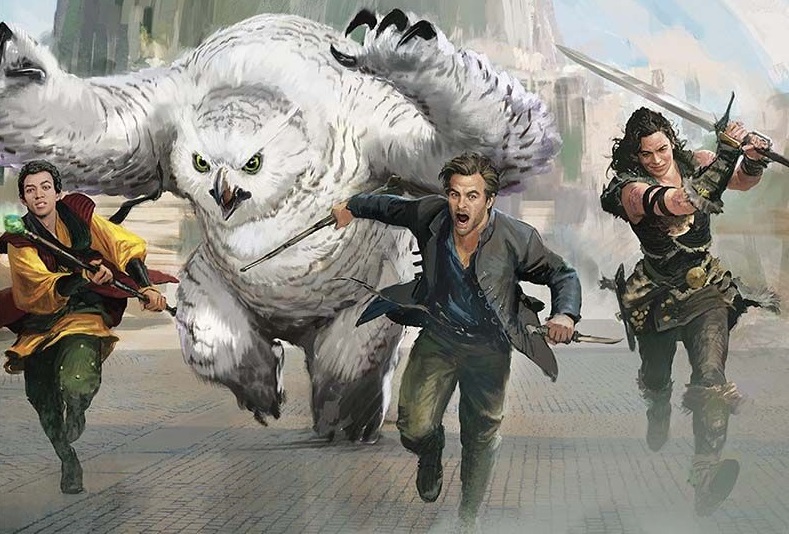The Art of Dungeons & Dragons – Honor Among Thieves does not offer any unexpected adventures, but it still provides a fascinating look at the lavish and fun film.
Eleni Rousseos not only gives us a fascinating insight into the creation of the film but also brings out details from the role-playing game that the movie was based on, which viewers may have missed in their initial viewing.
These trivial facts were some of the highlights of this 198-page book.
The filmmakers have made many references to Dungeons and Dragons in small and large details.
The roleplaying games and their many variations have inspired nearly all props and paintings. It’s clear that the filmmakers collaborated closely with Dungeons & Dragons specialists to nail every single detail.
Roussos took the time to show the transformation of Saturday cartoon characters Hank, Eric Diana Presto Sheila Bobby, from the animation cell into live action. Bobby’s unicorn Uni is not seen.
Know the difference between Sorcerer and Wizard?
It’s not true. This is a net benefit of this book, an introduction to the lore and history of Dungeons & Dragons. While a Wizard will study hard to learn how to do magic, a Sorcerer is born with magic in their blood. Each character’s description tells you how they function in the game and movie.
Honor Among Thieves can be seen as a guide for Dungeons & Dragons beginners.
Four basic sections are used to cover all of the important elements in the movie: characters, beasts/creatures, realms and production.
The directors John Francis Daley, Jonathan Goldstein and producer Jeremy Latcham, executive producer Denis L. Stewart and department heads such as production designer Ray Chan and the cast Chris Pine, Michelle Rodriguez Justice Smith and Hugh Grant give us valuable insights.
Roussos highlights that the filmmakers used practical effects wherever possible, and built as many set pieces and creatures for actors to act with. Stan Winston’s Legacy Effects Studios created the cat-like Tabaxi and dragonlike Aarakocra. Each character required multiple actors and operators in order to make it come to life.
The design of the dead bodies in the cemetery scene was a tidbit which resonated with me. It was one of many highlights in the movie. The decaying corpses were not only inhabited by performers, but they also had a vintage 80s film feel to them. It’s a familiar territory.
This work is disappointing in that it feels like an overly polished promotion tool. It’s lacking a “from the beginning” development process that chronicles the very early stages. It’s this aspect of the material that I find most enjoyable, watching ideas develop from conception to completion. Most of the time, we see fully rendered artwork that is close to the finished product. A few computer-generated variations are thrown in as well.
The artists themselves are not given enough credit. The department heads are entitled to their due credit, but there is a large team of artists who help them bring their visions to life. The artists who created each piece should have been credited next to or beside their creations, rather than being lumped in with the other artists at the end.
This release offers a collection of mostly computer-generated artwork and some fun information about the production process. You’ll love it if that’s what you like. If you want to see the entire collection of art used in the preproduction of a fantasy movie, The Art of Dungeons & Dragons Honor Among Thievesis not for you.
